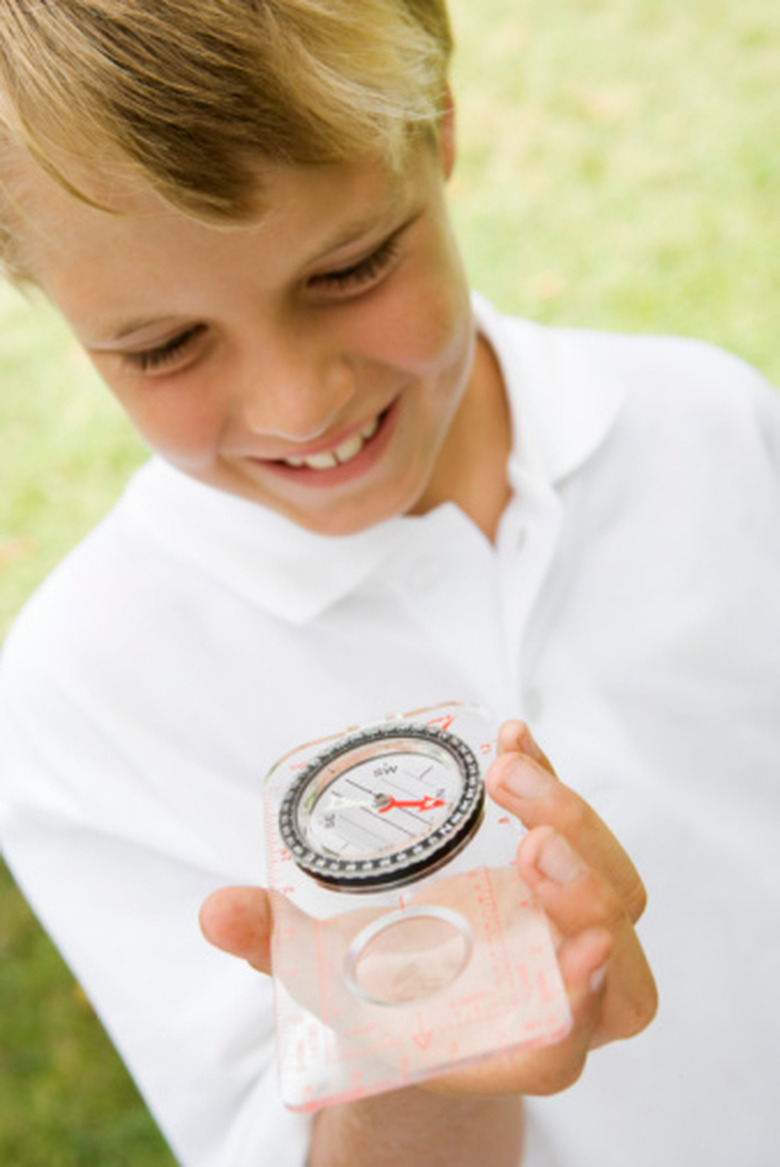Science Projects On Magnets For The Fourth Grade
Students of all ages find magnets fascinating. In primary grades, students have likely been given opportunities to play with magnets and explore some of their properties. Fourth grade is an excellent time for students to start examining the science behind magnets. Magnets provide opportunities for hands-on experimentation with immediate results, which generate the students' interest in learning more. Science projects centered on concepts of attraction and repulsion, compasses, magnetic art and electromagnets can give students insight and knowledge into how magnets behave.
Attraction and Repulsion Projects
Attraction and Repulsion Projects
Attraction and repulsion projects are good for fourth graders first beginning to explore magnetism. A magnet has two poles (north and south) and magnets either attract or repulse each other depending on the orientation of the poles. A good fourth grade project to explore this concept requires two paper clips, a bar magnet, thread and wire cutters. Magnetize a paper clip by stroking it with a bar magnet in the same direction at least 20 times. With adult assistance, students should cut the paper clip in half using the wire cutters. Dangle a non-magnetized paper clip from the thread. Hold one-half of the broken paperclip close to it. Then hold the other half of the broken paperclip near it. Students will find that both parts of the magnetized paper clip become a magnet with its own north and south pole.
Compass Projects
Compass Projects
Fourth graders can create their own compasses, which contain magnets that move and position themselves so one of its ends points north and the other points south. One way students can create their own compass requires two corks, two steel needles, a plastic bowl, a bar magnet and water. Hold one needle by its eye. Take the block magnet and stroke the needle with it about 20 times, going in the same direction. Stick both ends of the magnetized needle into the corks. Fill the bowl with about an inch of water. Carefully float the corks and needle in the water. It will spin and then will settle. The tip of the needle will point towards magnetic north.
Magnetic Art Science Projects
Magnetic Art Science Projects
Students can also complete science projects that explore magnets through art projects. Students can make a permanent picture of magnetic fields with a bar magnet, iron filings, paint, a toothbrush and a blank sheet of paper. Students begin by placing the bar magnet under the sheet of paper and sprinkling the iron filings over the paper. The filings will show the magnetic fields. Put some paint on the toothbrush. Students should flick the toothbrush with their finger to spray paint onto the paper. Make sure that the filings are well covered; leave them sit to dry. When the paint is dry, remove the filings and the magnet. Students have created a permanent record of the magnetic fields.
Electromagnets
Electromagnets
Students can also create an electromagnet. Students need a long insulated wire, an iron nail, a paper clip, a 9-volt battery, tape and steel pins. Begin by winding the insulated wire around the nail at least 10 times and securing it with tape. Connect one end of the wire to the negative terminal of the battery, and the other end of the wire to the positive terminal. Create a paper clip switch by clipping one of the wires in half; attach each end to a paper clip. To turn the switch off, disconnect the wire. To turn the switch on, reattach the paper clip. Hold the nail over a pile of steel pins. The nail should become magnetized and pick up the pins. Turn off the switch. The nails should drop when the circuit is broken.
References
- Kids Gen: How Magnets Work
- "Hands-On Science Electricity and Magnets"; Sarah Angliss; 2001
- "The Usborne Big Book of Experiments"; Alastair Smith; 1996
Cite This Article
MLA
Leigh, Nicole. "Science Projects On Magnets For The Fourth Grade" sciencing.com, https://www.sciencing.com/science-projects-magnets-fourth-grade-7964157/. 24 April 2017.
APA
Leigh, Nicole. (2017, April 24). Science Projects On Magnets For The Fourth Grade. sciencing.com. Retrieved from https://www.sciencing.com/science-projects-magnets-fourth-grade-7964157/
Chicago
Leigh, Nicole. Science Projects On Magnets For The Fourth Grade last modified August 30, 2022. https://www.sciencing.com/science-projects-magnets-fourth-grade-7964157/
